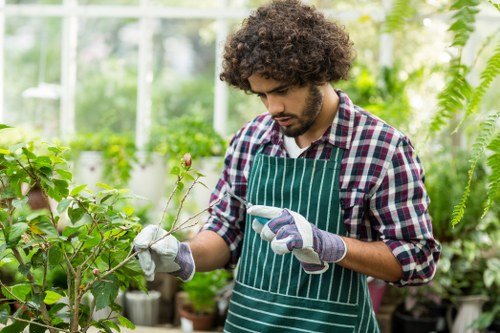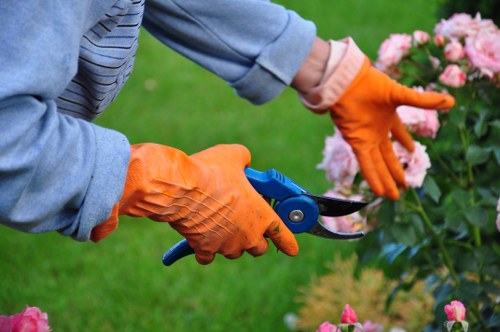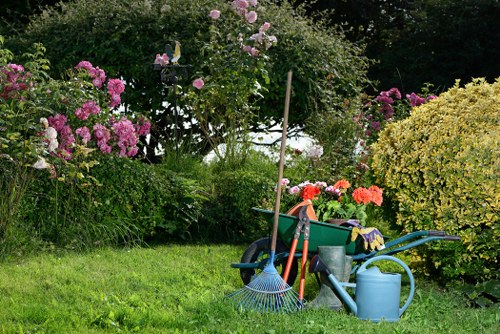Moss Removal Driveway South Wimbledon
Moss growing on driveways can be more than just an eyesore. In South Wimbledon, where the climate supports lush greenery, moss can quickly take hold, making your driveway slippery and unattractive. Understanding how to effectively remove moss and prevent its return is essential for maintaining a safe and beautiful property.
Moss thrives in damp, shaded areas, common in many driveways due to surrounding trees and poor drainage. Ignoring moss growth can lead to further deterioration of your driveway surface, resulting in costly repairs. This article explores various methods for moss removal, prevention strategies, and why hiring a local professional in South Wimbledon can make all the difference.
Whether you're dealing with a small patch or widespread moss growth, the right approach can restore your driveway's appearance and functionality. From manual removal techniques to advanced chemical treatments, we cover everything you need to know to tackle moss effectively.

Why Moss Grows on Driveways
Moss growth on driveways is a common issue that many homeowners in South Wimbledon face. Understanding the reasons behind moss proliferation can help in effectively addressing the problem.
Environmental Factors
The climate in South Wimbledon, with its frequent rain and moderate temperatures, creates an ideal environment for moss to flourish. Moss spores are easily spread through wind and water, making moist driveways perfect breeding grounds.
Poor Drainage
Driveways with inadequate drainage systems retain water longer, providing the constant moisture that moss needs to grow. Puddles and standing water create a persistent damp environment, encouraging moss to take hold.

Lack of Sunlight
Shaded driveways receive less sunlight, reducing the temperature and increasing moisture levels. Trees and buildings that block sunlight exacerbate moss growth by keeping surfaces cooler and damper.
Surface Material
The type of material your driveway is made from can influence moss growth. Porous materials like asphalt and concrete are more susceptible to retaining moisture, whereas smoother surfaces may be less hospitable to moss.
Organic Debris
Leaves, twigs, and other organic matter can accumulate on driveways, providing nutrients for moss. This debris traps moisture and creates a favorable environment for moss to thrive.

Methods of Moss Removal
Effectively removing moss from your driveway involves choosing the right method based on the severity of the growth and the driveway material. Here are some common techniques:
Manual Removal
Manual removal involves physically scraping or brushing off moss. This method is labor-intensive but effective for small areas. It requires regular maintenance to prevent moss from returning.
Chemical Treatments
Chemical moss removers can kill moss quickly. Products containing moss-killing agents like ferrous sulfate or potassium salts are commonly used. It's important to follow the manufacturer's instructions to avoid damaging the driveway surface.
Pressure Washing
Pressure washing uses high-pressure water jets to remove moss and other debris. This method is efficient for large areas and can restore the driveway's appearance. However, care must be taken to avoid damaging the surface.

Biological Solutions
Biological treatments use natural agents, such as moss-killing bacteria, to eliminate moss. These eco-friendly options are safer for the environment and can prevent moss from returning without harsh chemicals.
Natural Remedies
Simple household items like vinegar or baking soda can be effective in killing moss. Spraying a vinegar solution on the affected areas can help reduce moss growth naturally.
Protective Sealants
After removing moss, applying a protective sealant can help prevent future growth. Sealants create a barrier that resists moisture and inhibits moss spores from taking root.

Preventing Moss Growth
Preventing moss from returning is just as important as removing it. Here are some strategies to keep your driveway moss-free:
Improve Drainage
Ensuring proper drainage can significantly reduce moss growth. Installing drainage systems or regrading your driveway to avoid water pooling helps keep surfaces dry.
Increase Sunlight Exposure
Trimming overhanging branches and removing obstacles that block sunlight can help reduce moss growth. More sunlight means drier conditions that are less favorable for moss.
Regular Maintenance
Regularly cleaning your driveway to remove debris and prevent moisture buildup is essential. Sweeping away leaves and cleaning spills promptly can keep moss at bay.
Choosing a Professional in South Wimbledon
Selecting a local professional for moss removal ensures that the service is tailored to the specific conditions of South Wimbledon driveways. Here's what to consider:
What to Look For
- Experience and Expertise
- Use of Safe and Effective Products
- Positive Reviews and References
- Competitive Pricing
- Comprehensive Services
Local Professionals
Local experts understand the unique challenges of moss growth in South Wimbledon. They can provide customized solutions that are both effective and environmentally friendly.
Local Areas Near South Wimbledon
If you're located in South Wimbledon, you might also be in or near some of these areas, each with their unique features relevant to moss removal driveway services:
- Wimbledon Park: A nearby area known for its expansive park and residential driveways commonly affected by moss.
- Raynes Park: Close to South Wimbledon, Raynes Park has a mix of old and new driveways where moss removal services are in demand.
- Collingwood: This area has many cobblestone driveways that require specialized moss removal techniques.
- Hurlingham: Known for its quiet streets and gardens, Hurlingham driveways often need regular maintenance to prevent moss growth.
- Kingston Vale: With its lush greenery, moss removal services are essential to maintain driveway aesthetics.
- Southfields: An area with a high density of driveways affected by urban moss and environmental factors.
- Wandsworth: Offering a variety of driveway surfaces, requiring different moss removal approaches.
- Southfields: Close to South Wimbledon, this area shares similar climate conditions that promote moss growth.
- West Wimbledon: Driveways here benefit from professional moss removal due to the surrounding vegetation.
- Harrow: Slightly further out, Harrow's driveways also experience moss-related issues, making professional services valuable.
Conclusion
Maintaining a moss-free driveway in South Wimbledon is essential for both safety and curb appeal. By understanding the causes of moss growth and employing effective removal and prevention strategies, you can keep your driveway in excellent condition. Whether you choose to handle the task yourself or hire a local professional, taking proactive steps will ensure your driveway remains clean and safe year-round.
Frequently Asked Questions
1. How often should I remove moss from my driveway?
It's recommended to inspect and clean your driveway at least twice a year, typically in the spring and autumn, to prevent moss from establishing a stronghold.
2. Can moss damage my driveway surface?
Yes, moss retains moisture which can lead to the deterioration of driveway materials like concrete and asphalt, causing cracks and uneven surfaces over time.
3. Are chemical moss removers safe for the environment?
Many chemical moss removers can be harmful to the environment if not used properly. It's important to choose eco-friendly products or consult with professionals who use sustainable methods.
4. What is the best time of year to treat my driveway for moss?
The best times are during the warmer months when the moss is actively growing, making treatments more effective. Early spring and late summer are ideal periods.
5. Can I prevent moss growth without using chemicals?
Yes, improving drainage, increasing sunlight exposure, and regular maintenance can significantly reduce moss growth without the need for chemical treatments.